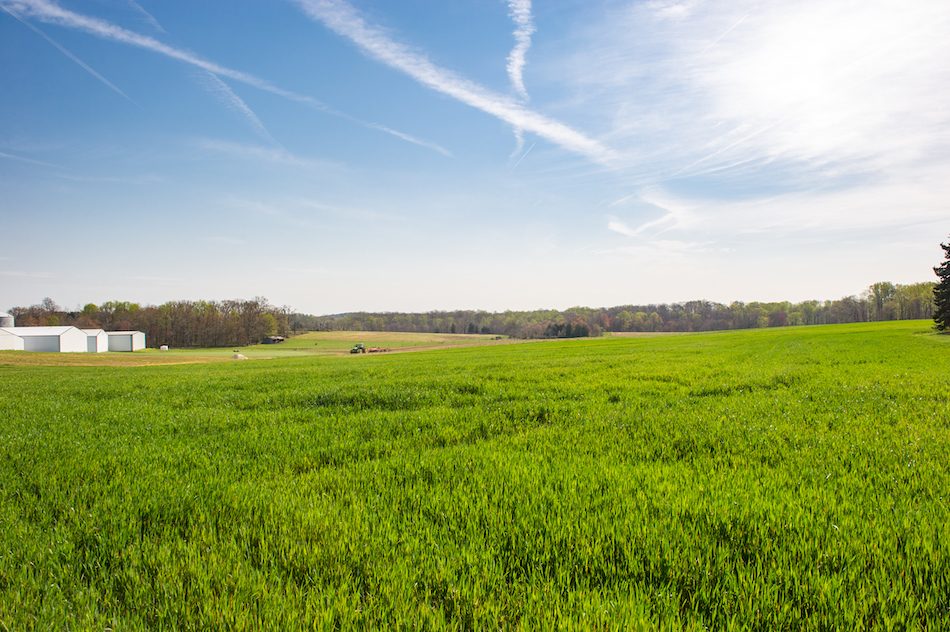Endless water, a cool summer and severe weather plagued southeastern South Dakota during the 2019 growing season, but it didn’t stop research at the South Dakota State University (SDSU) Southeast Research Farm (SERF) outside of Beresford.
Researchers there gathered an immense amount of data that was presented to farmers at the farm’s annual field day Sept 12. Speakers from most of SDSU’s agricultural departments discussed how the year went on the research farm and what data was pertinent to South Dakotan farmers.
The biggest discussions, which revolved around cover crops tested and grown on the farm, focused on how rye could be used as an effective cover crop and how the newest varieties of hybrid rye are actually very effective small grain crops.
Ben Brockmueller, an SDSU grad student, presented the data gathered at the research farm that found they averaged roughly 100 bushels per acre on their hybrid rye.
“With hybrid rye, a fella just should keep his finger on the pulse on that one,” farm supervisor Peter Sexton said. “If the market develops, it’ll be a nice good crop for us.”
Overall, rye seemed to hold up better than most everything tested, according to Sexton and Brockmueller. Through the course of their trials, they found that rye as a cover crop benefits diversity and improves soil health while being very winter hardy, even more so than winter wheat.
“It’s really just a more robust crop to work with,” Sexton said.
The problem rye creates, Brockmueller said, is that it can contaminate other small grain crops. Several producers along the tour asked if planting rye meant that there would be rye in their field forever. But, on the biomass side of the discussion, Brockmueller said rye will push several thousand pounds per acre, which is more than most cover crops they’ve tested.
“We’re really seeing two to three thousand pounds per acre, but we can get up to four thousand depending on what moisture we get,” he said.
The ultimate rule with rye, Sexton added, is that you want to kill it once it hits mid-May or right at planting. Biomass levels take off dramatically after the beginning of June.
“It goes down pretty good and is fairly easy to kill,” Sexton said.
Overall, Sexton’s cover crop philosophy boils down to seven rules to ask yourself before planting:
- What is the ease of establishment and competitiveness with weeds?
- What is the temperature you’re planting in?
- How much residue do you want on the field?
- What is your livestock involvement?
- And what is the timing and cost you’d like to consider?
The key decision point is with whether you’re looking for a warm- or cool-season cover crop and how much residue you want leftover. Many farmers already know the cost and the timing, Sexton said, but choosing the right species for the location and the use is something that’s often ignored in favor of planting whatever is cheapest.
At SERF, staff plants rye after corn and going into soybeans. They don’t know yet if rye works for soybeans into corn, but it’s something they’re studying. If you’re grazing the cover crop, Sexton advised producers to use a grass-based mix.
On the herbicide side of the equation, Gared Shaffer, an SDSU Extension weeds specialist, said that after 21 different herbicide trails, they found that following the label for the herbicide is really the only way to approach it. If your cover crop needs specific treatments, he said you have to follow the label.
The last bit of key information presented during the tours of the farm came from Sandeep Kumar, an associate professor at SDSU. He was tasked with researching grazing and soil health conditions as it relates to profitability. After studies involving producers, research plots, and other trails, Kumar said that the most efficient operations are those that combine livestock and crops.
The biomass and soil health of an operation with livestock grazing the fields was almost the same as that of native pasture, he said.
As it relates to profitability, Kumar said that through their trials it has been concluded that cover crops really aren’t profitable until many years into the system. The idea behind cover crops is more to promote soil health, he said, which is more profitable on the backend.





Post a comment
Report Abusive Comment